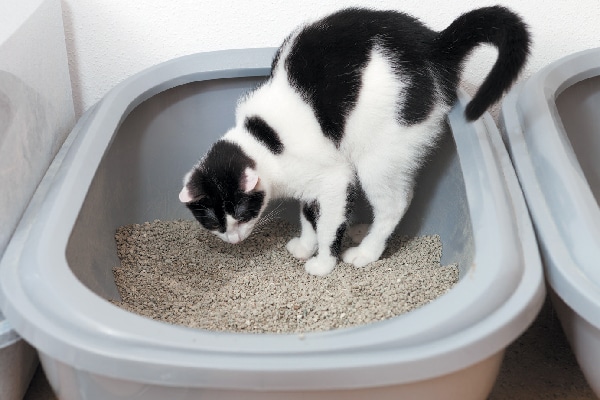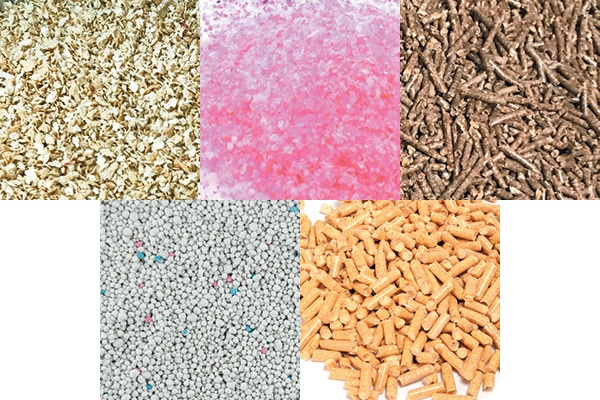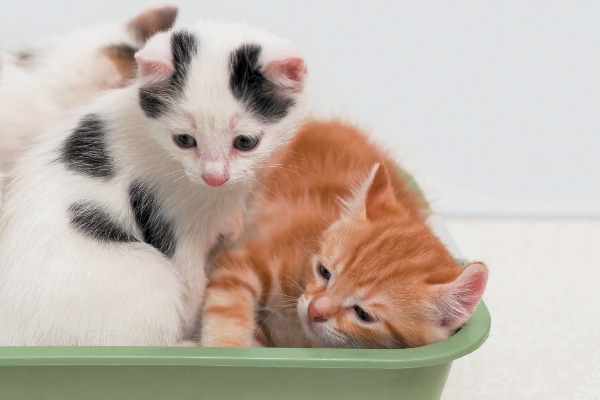While the name Kitty Litter, first registered in 1947 by its inventor, Edward Lowe, may still be universal, the product has been reinvented with lots of options. Some products contain clay and other minerals, some wheat, others corn husks, coconut husks, cassava plants, newspaper, silica gel, wood chips, peanut shells and orange peels. So, how you choose the best cat litter for your kitty?
Decisions, decisions — where does a cat parent begin when finding the best cat litter?

Adjectives that advertising agencies have used to describe the various litters is an excellent guideline to help narrow down the selection: lightweight, scoopable, absorbent, eco-friendly, dust-free (well, almost), flushable, scented, unscented, health-alert and odor-free. Simply pick the adjectives that best describe your needs and the main ingredient from the list of primary ingredients (clay, gel, corn husks, etc.), and you will know exactly what you have bought!
Of course, for it to be considered a successful purchase will still depend on feline approval. Cats are, after all, the end users …
Eco-friendly litters
The biggest trend is undoubtedly eco-friendly litters that help reduce the feline carbon pawprint because they are biodegradable, compostable, flushable (some of them) and don’t clog up landfills.
Natural litters are considered virtually dust-free and don’t contain any chemical odor-masking agents and fragrances believed to cause or aggravate asthma and other respiratory issues in both cats and humans.
Odor-control litters
Odor control is listed as the No. 1 priority for cat parents, and it has come a long way, too. When it comes to clay-based litters in particular, new nontoxic and unscented odor-absorbing ingredients are being patented. New litter additives and filters for litter boxes also help to obliterate odors altogether.
Lightweight litters
Further change focuses on the weight of clay-based litters that some regard as too heavy and cumbersome to work with on a daily basis. New lightweight clay litters on the market claim to be as much as 50 percent lighter and comparative in weight to other choices out there.
Litter containers are also changing from heavy plastic to lightweight bags with “spouts,” making it easier to carry and pour.
And the way we purchase litter is changing. Online purchases are growing in their appeal simply because with the click of a mouse, the product arrives on the doorstep. No heavy lifting required!
Diagnostic litters
Perhaps the biggest game changer has been the advent of diagnostic litters that alert cat parents to potential health issues, such as kidney disease, urinary tract infections and diabetes. The litters allow them to effectively monitor the situation and ultimately refer relevant information on to the cat’s veterinarian.
Such litters can have a positive impact on a cat’s general health and well-being and save thousands of cats from losing their homes and landing in shelters as a result of undiagnosed medical issues, which are often incorrectly labeled as deviant litter box behavior.
Monitoring litters use assorted pH indicators that react to the introduction of urine and change color to alert to a potential problem. They can be used permanently for cats who have already been diagnosed with an issue to monitor the severity or on an ad hoc basis as a home wellness check.
Bring on the litter box
There’s a style and shape of today’s litter box to suit every household from corners to hoods in a variety of fun colors to match home décor.
Litter boxes have come out of the closet to become more acceptable on display. First, due to the improvement in odor control; second, due to advice from behaviorists, who unilaterally believe that (especially in multi-cat households) open litter boxes are better. They offer the feline user a 360-degree view of the surroundings so he can see if another cat is approaching and plotting a box ambush and allow the cat to monitor general household traffic.
Along with this trend comes an increase in fabulous litter mats in a variety of colors and designs that effectively work to trap litter and prevent your cat from creating an indoor beach.
So what’s next in this category? There are already automated litter boxes that scoop and even ones that flush. With the huge selection of litter currently available, perhaps the next big thing will be a small cat-shaped robot that tops up litter as the contents of the box depletes. And, it would be great if it could shake out litter mats, too!
Litter check
Adjectives are a quick and easy guideline to the type of litter and its best features. Words that tell all include:
- Lightweight
- Scoopable
- Absorbent
- Eco-friendly
- Dust-free
- Flushable
- Scented
- Unscented
- Health-alert
- Odor-free
What might litter be made from?
Litter can be made from:

- Clay
- Wheat
- Corn husks
- Coconut husks
- Cassava plant
- Peanut husks
- Silica gel
- Wood chips
- Grains
- Recycled newspaper
Thumbnail: Photography ©AlbinaTiplyashina | Getty Images.
Editor’s note: This article appeared in Kittens, a special issue from Catster magazine. Look out for Kittens on a newsstand near you!
Tell us: In your opinion, what is the best cat litter? What kind of cat litter do you use?
Sandy Robins is an award-winning multimedia pet lifestyle expert, author and pet industry personality. Learn more about Sandy at sandyrobinsonline.com.
Read more about cat litter on Catster.com:








